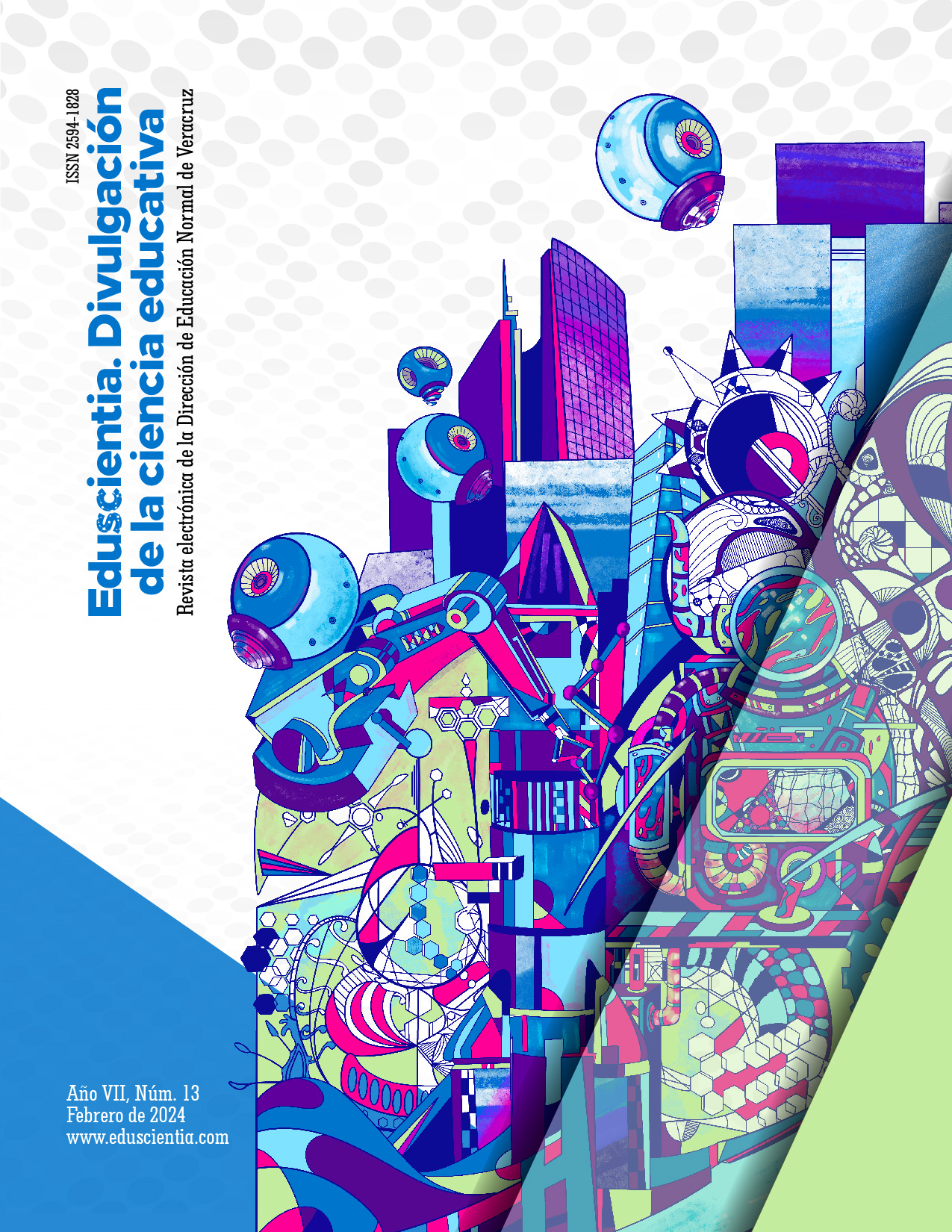Tecnología educativa impulsada por internet de las cosas: hacia el pensamiento complejo y aprendizaje personalizado
Palabras clave:
educación superior, innovación, pensamiento, ciberfísicos, tecnologíaResumen
La revolución de la Industria 4.0 ha introducido nuevos desafíos en los sistemas ciberfísicos, impulsando la tecnología del internet de las cosas (IoT). Junto a la educación, aporta una nueva perspectiva a la tecnología educativa. El objetivo de este trabajo es demostrar tres ejes diferentes de su utilización: el primero destaca su papel en el ámbito educativo; el segundo se centra en la personalización de la educación mediante datos en tiempo real; y el tercero aborda el pensamiento complejo, fundamental en la nueva revolución industrial. Esto se logra mediante la aplicación de una revisión sistemática de la literatura, utilizando el marco PRISMA para identificar el grupo de artículos centrados en los tres ejes. Además, se presentan ejemplos de cómo el IoT puede mejorar el pensamiento complejo y la personalización en la educación. En conclusión, su integración en ella no solo moderniza los métodos de enseñanza, también promueve habilidades analíticas avanzadas. Versión en lengua de señas mexicana
Citas
Al-Emran, M., Malik, S. I., y Al-Kabi, M. N. (2020). A Survey of Internet of Things (IoT) in Education: Opportunities and Challenges. Studies in Computational Intelligence, 846. https://doi.org/10.1007/978-3-030-24513-9_12
Alrashidi, M. (2023). Synergistic integration between internet of things and augmented reality technologies for deaf persons in e-learning platform. Journal of Supercomputing, 79(10), 10747–10773. https://doi.org/10.1007/S11227-022-04952-Z/TABLES/13
Bresnahan, P., Cyronak, T., Brewin, R. J. W., Andersson, A., Wirth, T., Martz, T., Courtney, T., Hui, N., Kastner, R., Stern, A., McGrain, T., Reinicke, D., Richard, J., Hammond K., y Waters, S. (2022). A high-tech, low-cost, Internet of Things surfboard fin for coastal citizen science, outreach, and education. Continental Shelf Research, 242. https://doi.org/10.1016/j.csr.2022.104748
Byrne, J.-R., O’Sullivan, K., y Sullivan, K. (2017). An IoT and Wearable Technology Hackathon for Promoting Careers in Computer Science. IEEE Transactions on Education, 60(1). https://doi.org/10.1109/TE.2016.2626252
Castillo-Martínez, I. M., y Ramírez-Montoya, M. S. (2021). Research Competencies to Develop Academic Reading and Writing: A Systematic Literature Review. Frontiers in Education, 5. https://doi.org/10.3389/FEDUC.2020.576961/BIBTEX
Farias-Gaytan, S., Aguaded, I., y Ramirez-Montoya, M. S. (2023). Digital transformation and digital literacy in the context of complexity within higher education institutions: a systematic literature review. Humanities and Social Sciences Communications 2023 10:1, 10(1), 1–11. https://doi.org/10.1057/s41599-023-01875-9
García-Ruiz, R., Buenestado-Fernández, M., y Ramírez-Montoya, M. S. (2023). Assessment of Digital Teaching Competence: Instruments, results and proposals. Systematic literature review. Educacion XX1, 26(1). https://doi.org/10.5944/educxx1.33520
Gómez, J., Huete, J. F., Hoyos, O., Perez, L., y Grigori, D. (2013). Interaction system based on Internet of things as support for education. Procedia Computer Science, 21, 132-139. https://doi.org/10.1016/j.procs.2013.09.019
Kassab, M., DeFranco, J., y Laplante, P. (2020). A systematic literature review on Internet of things in education: Benefits and challenges. Journal of Computer Assisted Learning, 36(2). https://doi.org/10.1111/jcal.12383
Konstantinidis, S. Th. (2021). Internet of Things in education. Digital Innovations in Healthcare Education and Training, 61-86. https://doi.org/10.1016/B978-0-12-813144-2.00005-2
Liu, J., Wang, C., y Xiao, X. (2021). Internet of Things (IoT) Technology for the Development of Intelligent Decision Support Education Platform. Scientific Programming, 2021. https://doi.org/10.1155/2021/6482088
Montes-Martínez, R., y Ramírez-Montoya, M. S. (2020). Training in Entrepreneurship Competences, Challenges for Educational Institutions: Systematic Literature Review. ACM International Conference Proceeding Series, 358-364. https://doi.org/10.1145/3434780.3436621
Moreira, F. T., Magalhães, A., Ramos, F., y Vairinhos, M. (2018). The power of the internet of things in education: An overview of current status and potential. Smart Innovation, Systems and Technologies, 80. https://doi.org/10.1007/978-3-319-61322-2_6
Prakash, K. R., Santhosh, M. S., Purushothama, G. K., y Ramya, M. V. (2021). An Approach to Convert Conventional Laboratories Into IoTEnabled Laboratories. International Journal of Web-Based Learning and Teaching Technologies, 16(5), 108-120. https://doi.org/10.4018/IJWLTT.20210901.OA6
Qureshi, K. N., Naveed, A., Kashif, Y., y Jeon, G. (2021). Internet of Things for education: A smart and secure system for schools monitoring and alerting. Computers and Electrical Engineering, 93. https://doi.org/10.1016/j.compeleceng.2021.107275
Rajšp, A., y Fister, I. (2020). A systematic literature review of intelligent data analysis methods for smart sport training. Applied Sciences (Switzerland), 10(9). https://doi.org/10.3390/app10093013
Ramlowat, D. D., y Pattanayak, B. K. (2019). Exploring the internet of things (IoT) in education: A review. Advances in Intelligent Systems and Computing, 863. https://doi.org/10.1007/978981-13-3338-5_23
Terzieva, V., Ilchev, S., y Todorova, K. (2022). The Role of Internet of Things in Smart Education. IFAC-PapersOnLine, 55(11), 108-113. https://doi.org/10.1016/j.ifacol.2022.08.057
Wang, Y., Muthu, B., y Sivaparthipan, C. B. (2021). Internet of things driven physical activity recognition system for physical education. Microprocessors and Microsystems, 81. https://doi.org/10.1016/j.micpro.2020.103723
Descargas
Publicado
Cómo citar
Número
Sección
Licencia

Esta obra está bajo una licencia internacional Creative Commons Atribución-NoComercial-CompartirIgual 4.0.









